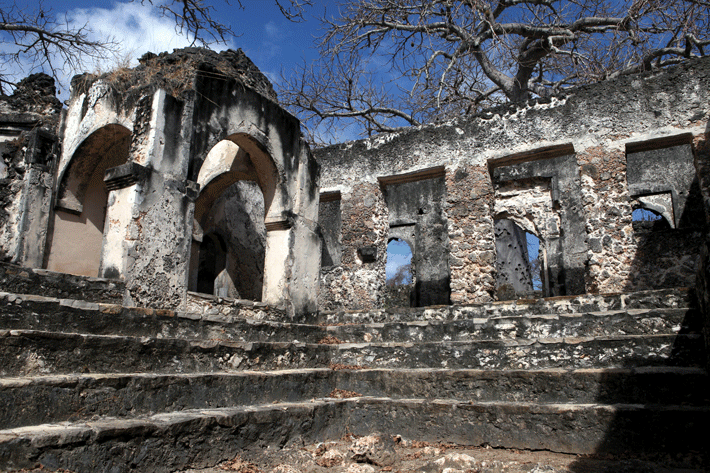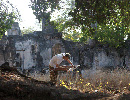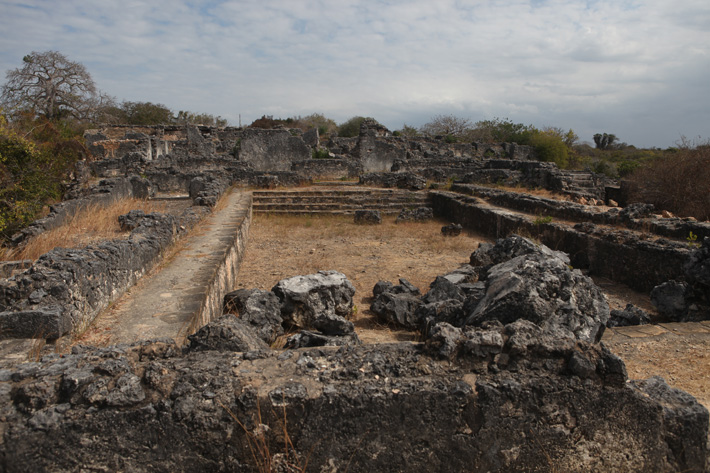Matters of Context
January/February 2014
When British archaeologist Neville Chittick and other early researchers first looked at the ancient stone towns of the Swahili Coast in the 1950s, they saw a culture that couldn’t possibly be African. In the sites’ foreign goods, Islamic architecture, and mosques, they saw unmistakable signs of a colonial influence, likely from Persia. He dismissed African material he documented at these sites as housewares used by a local population in thrall to foreign leaders. We know now that the Swahili culture is African in origin and adopted foreign culture, goods, and religion on its own terms. Yet the interpretation by Chittick and others persists as a part of Swahili identity, and even in some guidebooks and textbooks. What led him to misinterpret the archaeology he observed at sites such as Kilwa Kisiwani in Tanzania? “The Swahili case is a textbook example of a colonial archaeology,” says Jeffrey Fleisher of Rice University, codirector of the excavations at nearby Songo Mnara.
In archaeology, between excavation and publication comes interpretation. Men like Chittick (who passed away in 1984) were products of their time, colonial men in a colonial world. Naturally they would see a reflection of themselves in their findings. Some Swahili researchers, including Chap Kusimba of American University, who has excavated Swahili sites in Kenya, find this colonial interpretation racist at its core—as if Africans were incapable of building an urbane, sophisticated medieval society of their own. “You try to challenge a deeply entrenched paradigm like that, that has colonial roots,” he says, “and it is an extraordinary uphill battle.”

Thirty years of scholarship, including the seven-year excavation of the stone town Shanga in Kenya, put an end to the colonial interpretation and ushered in a postcolonial period in Swahili archaeology that acknowledges the indigenous nature of the Swahili Coast. At Shanga, Mark Horton of the University of Bristol found clear evidence that the stone town was preceded by a distinctively indigenous African one with the very same layout—complete with a succession of eight earthen mosques that date to as far back as the eighth century, shortly after Islam was founded. “The Swahili were part of a global zeitgeist in which they unashamedly took whatever stuff they wanted to,” says Horton.
Today, the interpretation of Swahili sites, and indeed sites throughout Africa, relies strongly on ethnography, the study of extant cultures. These more recent studies allow parallels to be drawn between the past and present—providing, for example, working theories on how the medieval Swahili structured their households. Peter Schmidt, an archaeologist at the University of Florida who has worked in West Africa for three decades, says that ethnoarchaeology is one of the great strengths of archaeology in Africa. “The inclusion of ethnographic information is a hallmark,” he says. “While change has been enormous and has occurred, there are still threads of continuity, eruptions of past into the present. If you catch yourself off of that, then you’re working in a vacuum.”
Interpretive frameworks—colonial, postcolonial, ethnographic—are what make archaeology more than collections of stuff. “I think we’re getting somewhere with this,” says Adria LaViolette of the University of Virginia. “Compared to what we knew about the Swahili in the 1950s, it’s unbelievable, considering how few people have really done long-term projects in East Africa. It’s been very effective archaeology.”
|
Feature:
|
Online Exclusive:
|

Stone Towns of the Swahili Coast
|

The Sultan’s African Palace
|